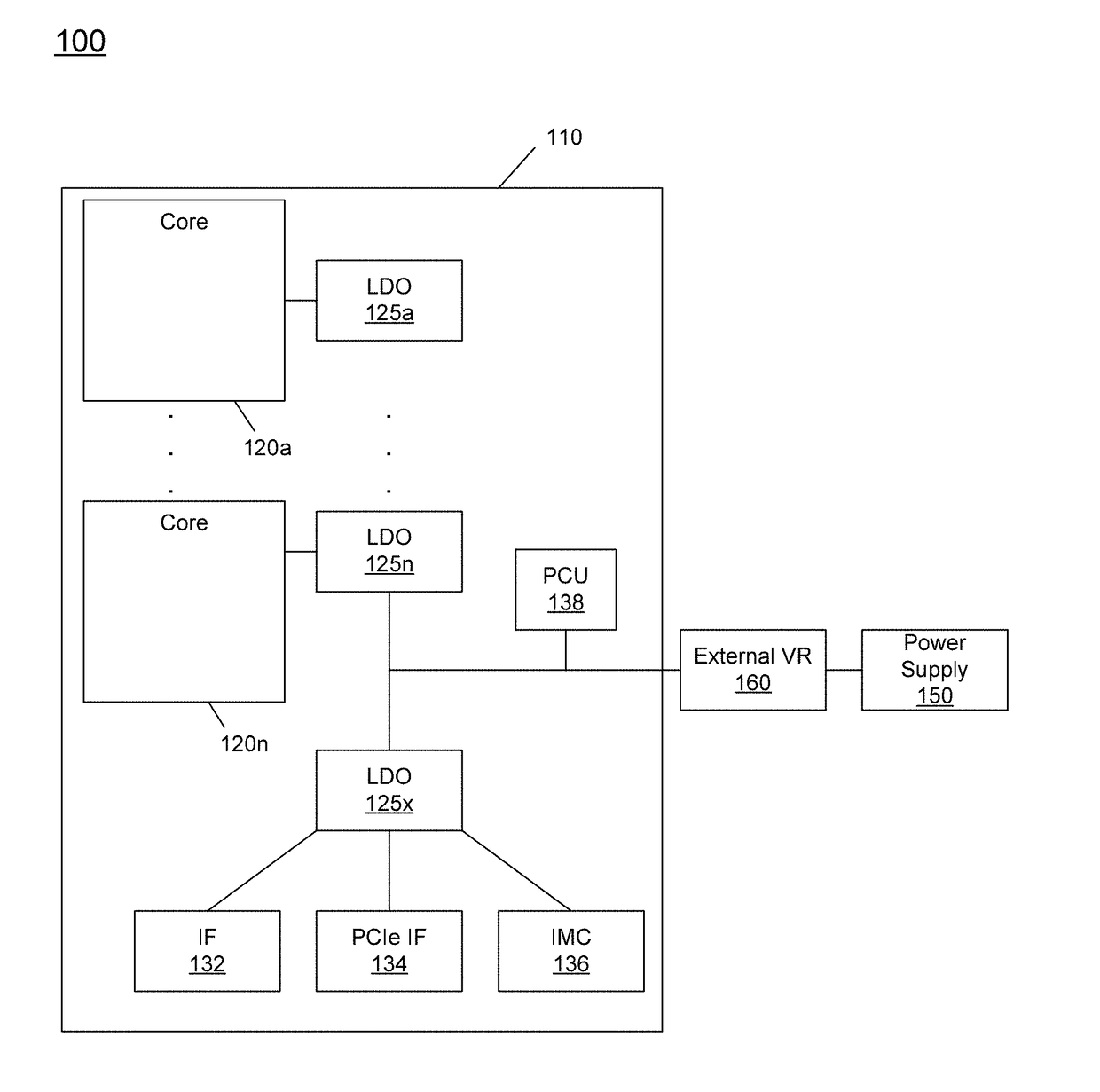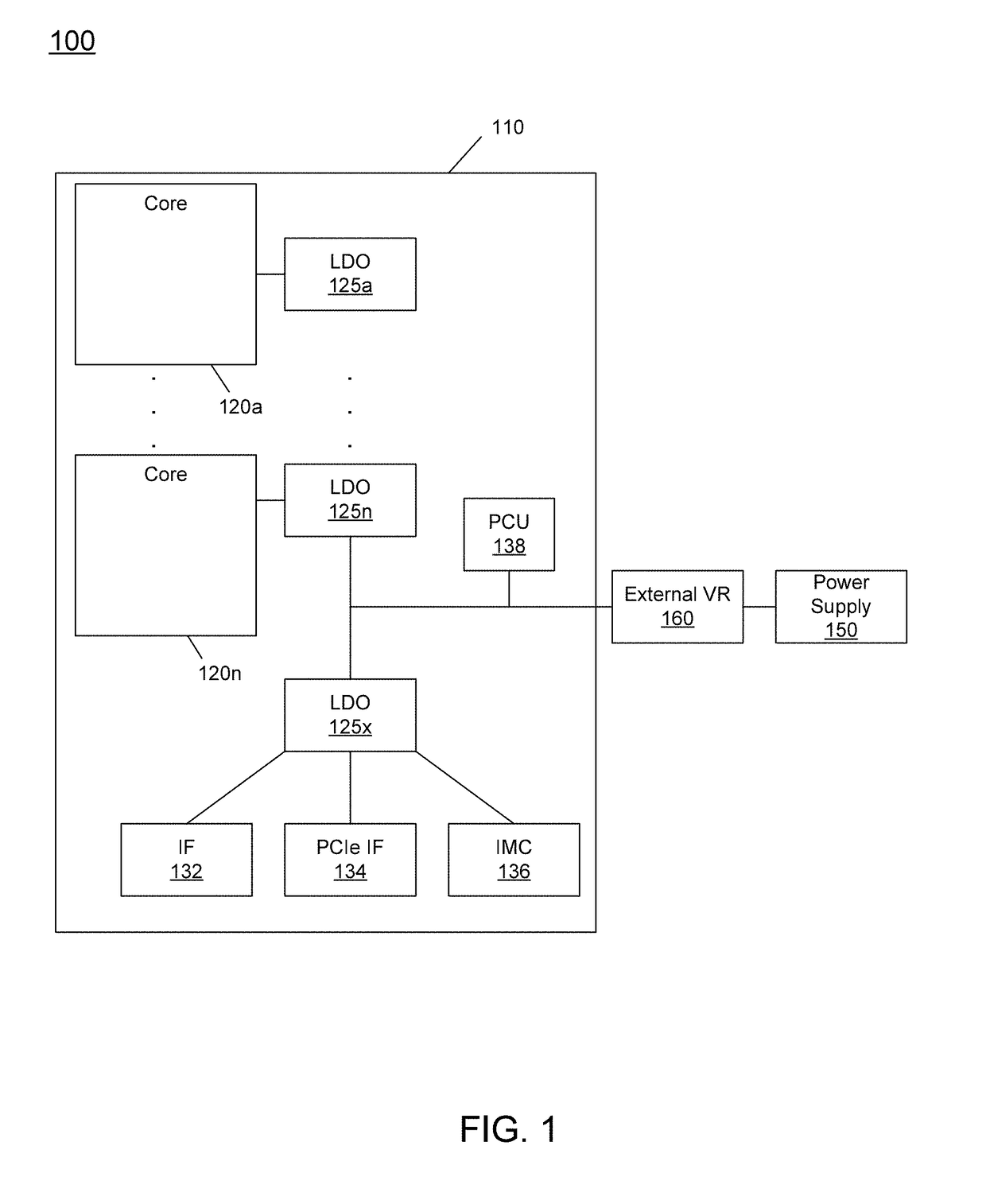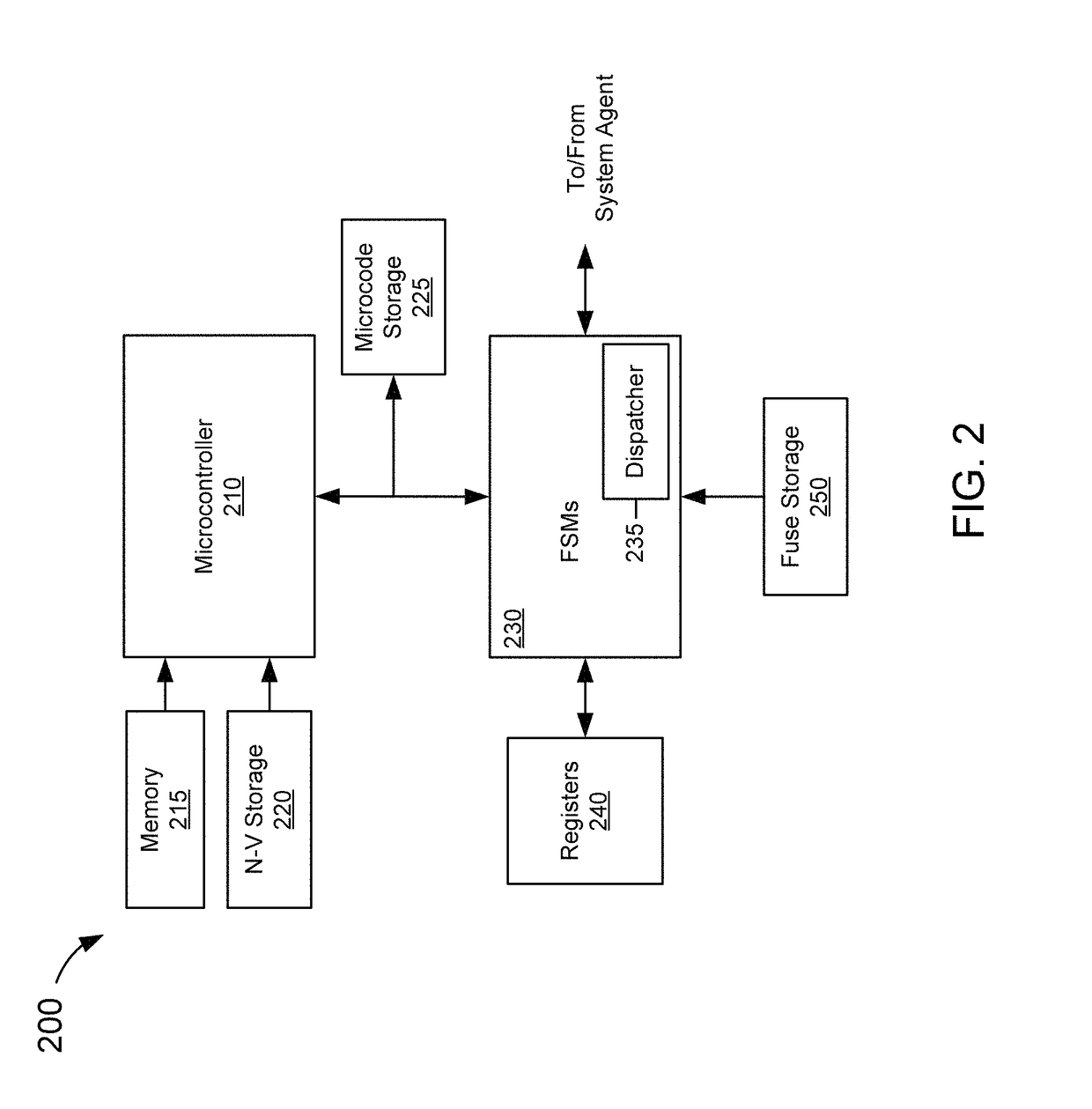Controlling Operating Voltage Of A Processor
a technology of operating voltage and processor, which is applied in the direction of power supply for data processing, liquid/fluent solid measurement, instruments, etc., can solve the problems of increasing the energy consumption of computing devices, consuming a large percentage of the entire electricity supply, and unable to exit low power sta
- Summary
- Abstract
- Description
- Claims
- Application Information
AI Technical Summary
Benefits of technology
Problems solved by technology
Method used
Image
Examples
Embodiment Construction
[0015]In various embodiments, voltage transitions within a processor may be segmented into two or more segments. In an embodiment, a dispatcher or other control logic of the processor may controllably cause such multi-phase voltage ramps. In operation, a first segment is a transition to an interim or safe voltage level, which is at a sufficient voltage level to cover all active agents (and at least one additional agent) running at a lower frequency in a particular transition. Any additional voltage increase to enable a pending frequency increase requested for one or more of the agents is handled in a second segment of the transition, which can occur after a low power state exit of the additional agent. Using such an embodiment, the worst case voltage ramp incurred before a low power state exit may be a worst case load line adder (e.g., 50 millivolts (mV)), rather than a full scale voltage range (e.g., from a minimum operating voltage to a maximum operating voltage, which for example...
PUM
 Login to View More
Login to View More Abstract
Description
Claims
Application Information
 Login to View More
Login to View More - R&D
- Intellectual Property
- Life Sciences
- Materials
- Tech Scout
- Unparalleled Data Quality
- Higher Quality Content
- 60% Fewer Hallucinations
Browse by: Latest US Patents, China's latest patents, Technical Efficacy Thesaurus, Application Domain, Technology Topic, Popular Technical Reports.
© 2025 PatSnap. All rights reserved.Legal|Privacy policy|Modern Slavery Act Transparency Statement|Sitemap|About US| Contact US: help@patsnap.com



